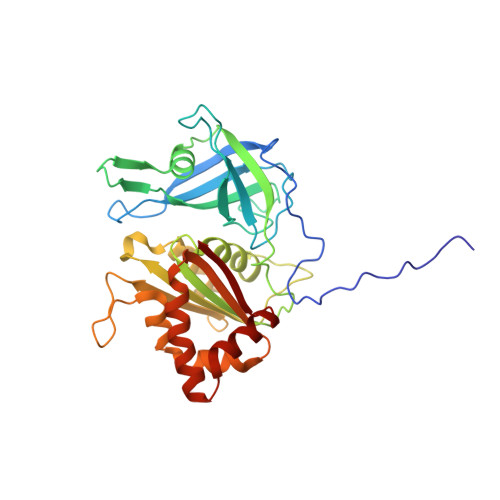A productive NADP+ binding mode of ferredoxin-NADP+ reductase revealed by protein engineering and crystallographic studies.
Deng, Z., Aliverti, A., Zanetti, G., Arakaki, A.K., Ottado, J., Orellano, E.G., Calcaterra, N.B., Ceccarelli, E.A., Carrillo, N., Karplus, P.A.(1999) Nat Struct Biol 6: 847-853
- PubMed: 10467097
- DOI: https://doi.org/10.1038/12307
- Primary Citation of Related Structures:
1QFY, 1QFZ, 1QG0, 1QGA - PubMed Abstract:
The flavoenzyme ferredoxin-NADP+ reductase (FNR) catalyzes the production of NADPH during photosynthesis. Whereas the structures of FNRs from spinach leaf and a cyanobacterium as well as many of their homologs have been solved, none of these studies has yielded a productive geometry of the flavin-nicotinamide interaction. Here, we show that this failure occurs because nicotinamide binding to wild type FNR involves the energetically unfavorable displacement of the C-terminal Tyr side chain. We used mutants of this residue (Tyr 308) of pea FNR to obtain the structures of productive NADP+ and NADPH complexes. These structures reveal a unique NADP+ binding mode in which the nicotinamide ring is not parallel to the flavin isoalloxazine ring, but lies against it at an angle of approximately 30 degrees, with the C4 atom 3 A from the flavin N5 atom.
- Section of Biochemistry, Molecular and Cell Biology, Cornell University, Ithaca, New York 14853, USA.
Organizational Affiliation:



















